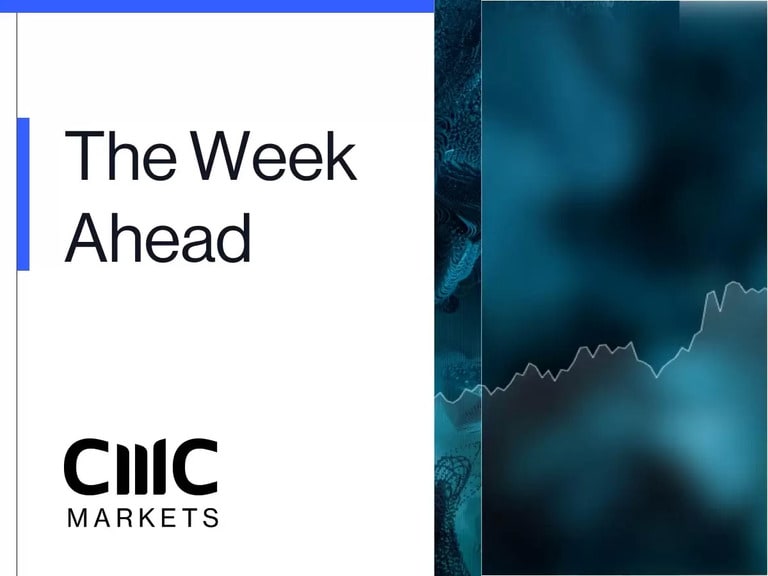Tech-led Wall Street to gain on Fed’s softness, but will inflation and earnings season pave the way?
Despite the bank turmoil, Wall Street endured well as stock markets, particularly in tech, cheered for the Fed’s rhetoric change on rate hikes and a relaxation of liquidities through the bank rescue package. Nasdaq again outperformed Dow and the S&P 500, up 4.6% for the month and 17% year-to-date, due to strengthened odds of a sooner Fed pivot, which continued to fuel dip-buys in growth stocks. The tech-heavy index is up 23% from its October low, entering a bull market. And the bank-induced recession fear also directed funds to these cash-rich companies for safety. But will the March CPI pave the way for the central bank’s further softness on its tightening steps? Plus, the first quarter earnings season is on the way to offer clues for if valuations have been underestimated after a brutal 2022.
The US bank crisis weighed on ASX, but can the RBA save the commodity-heavy market?
The ASX fell for the second month, underperforming its US and EU peers in March, down 1.5% in March, as the oversea bank crisis weighed the energy and bank-heavy market. Recession fears induced a sharp selloff in the financial sector and mining stocks. With inflation data offering positive signs of cooling, the RBA is strongly expected to pause its rate hikes at the beginning of April, which may provide a rebounding opportunity for local equities. The comeback in bank and energy stocks on Wall Street may also offer a tailwind. But the Australian quarterly CPI will still be in the spotlight to project the Reserve Bank’s future monetary policy path.
The RBNZ might have to adjust its policy stance to avoid domestic turmoil, and how will this steer the growth-sensitive currency, NZD?
Due to its limited size and liquidity conditions, the New Zealand stock market was more sheltered from the global markets. While the NZX 50 rose slightly in March, the New Zealand dollar ended higher against the US dollar and its trans-Tasman peer, the Australian dollar, but fell sharply against the haven currencies, like the Euro and the Japanese Yen. During a crisis, the New Zealand dollar is seen as the most vulnerable commodity, or so-called growth-sensitive currency. The RBNZ expressed concerns over the bank crisis in both the US and EU and may have to adjust its policy stance to accommodate the local banking system more. In April, NZ’s first quarter CPI and RBNZ’s policy meeting will be crucial for the local markets and the Kiwi dollar.
China’s relaxation on tech may spark a new buying euphoria in its stock markets
March was volatile for the Chinese stock markets due to global events, such as the bank rout and intensified geopolitical tension between the US and China. The Hang Seng Index rose 2.8% after a seesaw month. However, China’s termination of its strict Covid-zero policy still plays a key role in the global economic outlook. The sizable economic influence caused an intense dip-buys into Chinese shares, with a market bottom seen in the Hang Seng Index in late October 2022. Recently, the Chinese government seems to be further warming to the Chinese tech giants after Alibaba’s announcement to split the business and Jack Ma’s appearance in public, which may further fuel the dip-buys in the Chinese tech titans in April.
After a robust March, gold may face a correction phase
Gold futures rose about 8% on the risk-off sentiment sparked by the bank turmoil in March. The selloff in the US dollar also offered the upside momentum in gold. The precious metal may face a pullback risk in April since the bank crisis seems to settle, and bond yields start to climb again. But the gold’s long-term uptrend may not be altered so easily due to a pending crisis and a potential Fed’s turnaround from its hawkish stance.
Oil markets may be looking for a further rebound
Crude oil tumbled to a 15-month low in March due to recession fears but swiftly rebounded as the bank’s worries eased after a slew of bank rescue measures. Supply concerns over sanctions on Russia and improved demand outlooks following China’s reopening will still be the bullish elements for the oil markets. While the US inventory data showed a reduction in stockpiles, OPEC + announced a plan to impose further production cuts by about 1.16 million barrels per day, and undersupply might become a major issue again for the global markets. We will keep looking into these well-known events in April, focusing on the supply and demand side since the macro turmoil is more settled.
Disclaimer: CMC Markets is an execution-only service provider. The material (whether or not it states any opinions) is for general information purposes only, and does not take into account your personal circumstances or objectives. Nothing in this material is (or should be considered to be) financial, investment or other advice on which reliance should be placed. No opinion given in the material constitutes a recommendation by CMC Markets or the author that any particular investment, security, transaction or investment strategy is suitable for any specific person. The material has not been prepared in accordance with legal requirements designed to promote the independence of investment research. Although we are not specifically prevented from dealing before providing this material, we do not seek to take advantage of the material prior to its dissemination.







